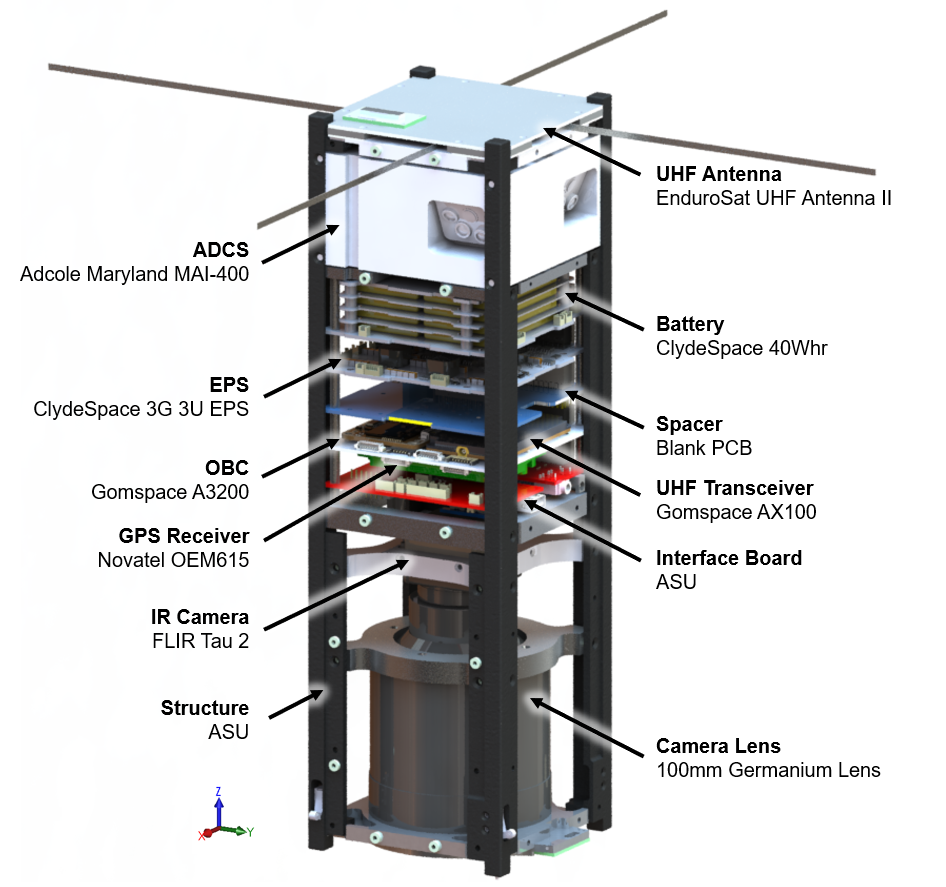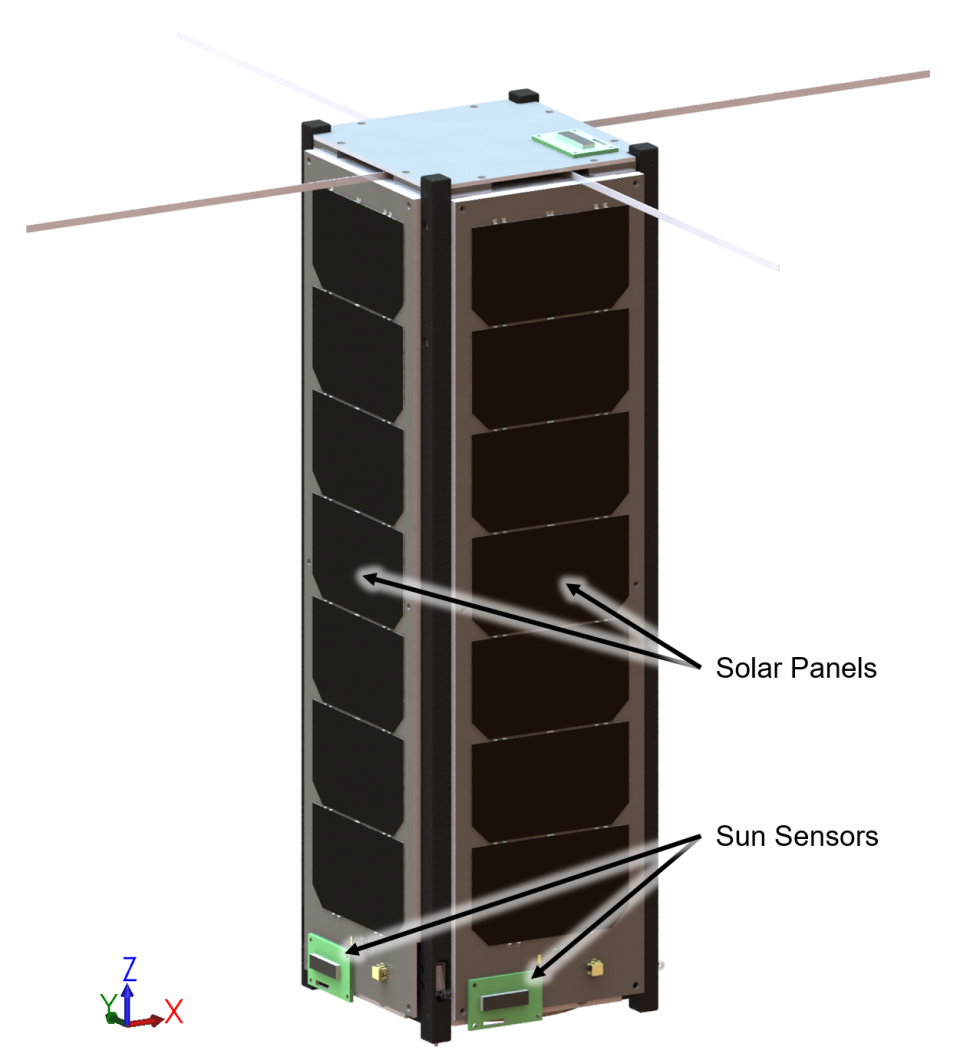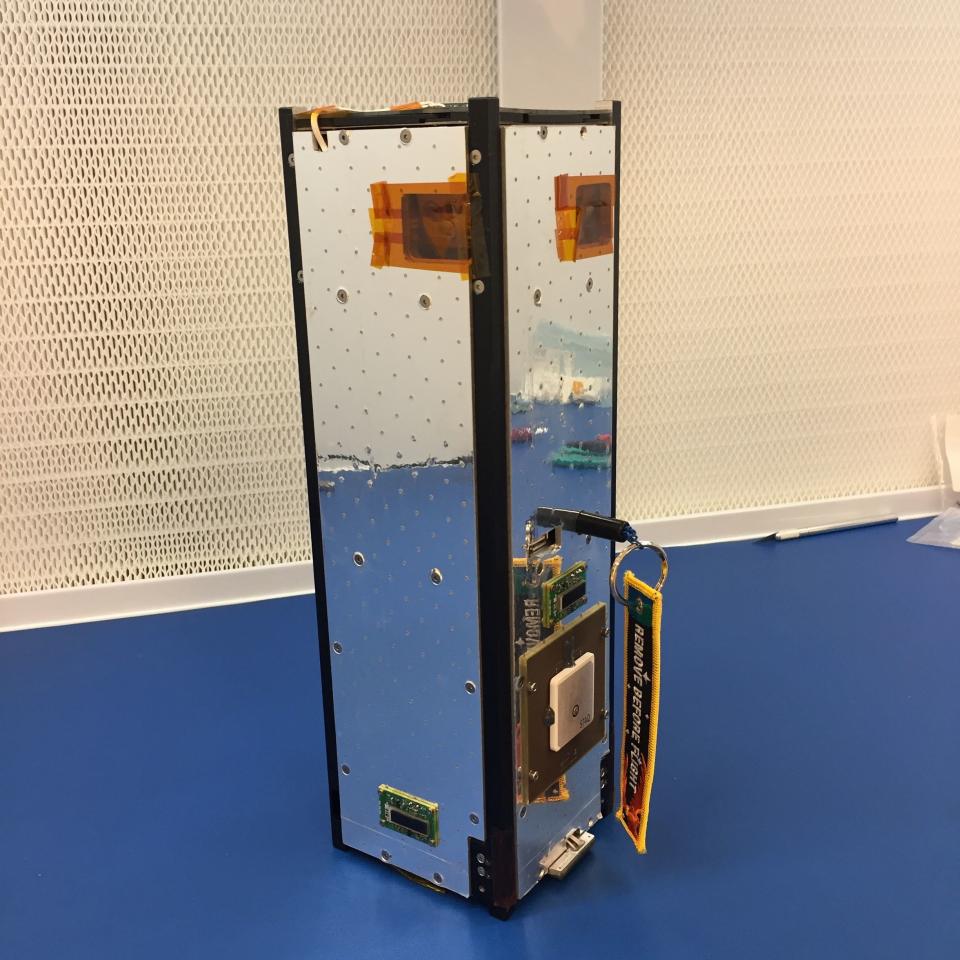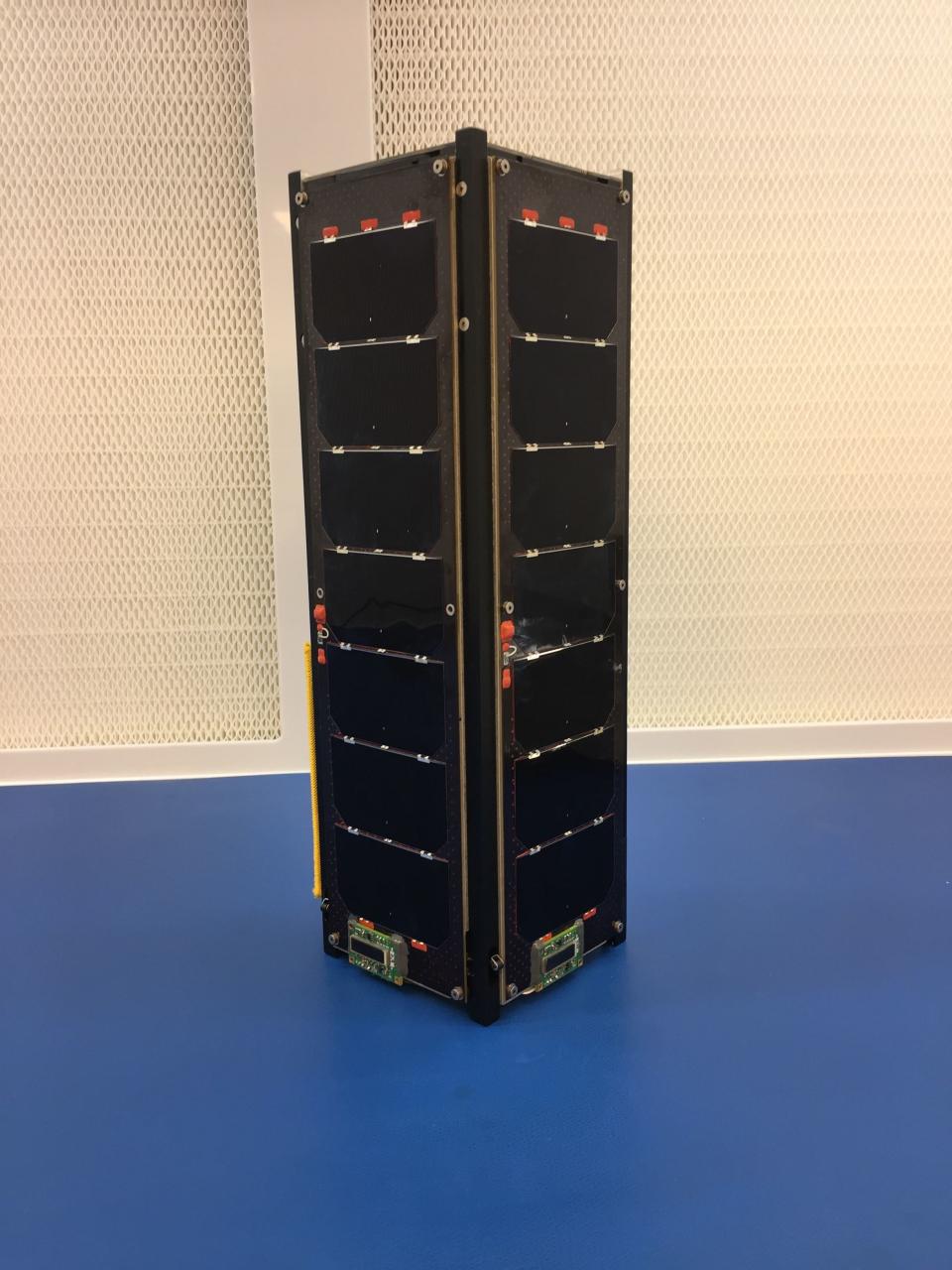A Note for Student CubeSat Teams:
Our Documents page houses various resources that the team used to develop Phoenix, along with documents that were developed by the team on the design, including: design reviews, our SmallSat Conference paper, licensing materials, and resources related to conformal coating, staking, and epoxy. If you're looking for resources on any of these areas, feel free to have a look through these materials - they are here for you!
Several lessons learned from developing Phoenix are also featured in The Art of Space Engineering Podcast (also available on Spotify, Apple Podcasts, Podcast Addict, and Google Podcasts). This includes topics related to FSW development, system I&T, and structure design. Another excellent resource is the CubeSatBoK Podcast, which was developed by Ricky Tan and Richard Gibbons to share various lessons learned in CubeSat development. It includes interviews with experts from industry and academia on topics related to leadership, FCC licensing, I&T and more. There's a lot of great content in these resources to listen to!
Phoenix Mission Overview
As our cities continue to grow, the layout and material composition of urban areas impact what is known as the Urban Heat Island (UHI) Effect: a phenomenon in which the structure of the city causes a rise in surface temperature. Phoenix is a 3U CubeSat designed by students from Arizona State University (ASU) which aims to study UHIs from Low Earth Orbit (LEO) through infrared remote sensing. While Phoenix aims to obtain valuable scientific data from orbit, the project is first and foremost an educational mission, designed to teach university students the concepts of spacecraft design and systems integration, interdisciplinary collaboration, and project management.
Phoenix is ASU's first fully student-led CubeSat project to be developed by the university, and as of November 2, 2019, it became ASU's first CubeSat to be launched into space. ASU was given the opportunity to develop Phoenix through a generous grant of $200,000, which was provided by NASA's Undergraduate Student Instrument Project (USIP), and the NASA Space Grant Consortium. NASA USIP was an Educational Flight Opportunity, which gave undergraduate students the ability to pursue hands-on projects that would help to prepare them for careers in the space industry while benefitting NASA's missions. Space Grant provides additional opportunities for undergraduates and graduates to gain real-world experience by facilitating research opportunities, providing funding, and connecting students with mentors.
In the fall of 2015, the student team submitted a proposal to NASA USIP to develop Phoenix, which was accepted in April 2016. From summer 2016 to August 2019, Phoenix gave close to 80 students pursuing science and engineering the opportunity to learn about spacecraft development, interdisciplinary communication, project management, and how to develop a scientific objective from the ground up.
Over the course of its four-year development period, Phoenix has joined efforts of 5 major ASU schools to pursue a common goal. These collaborations include: the School of Earth & Space Exploration, Ira A Fulton Schools of Engineering, School of Geographical Sciences & Urban Planning, Herberger Institute for Design and the Arts, and the Walter Cronkite School of Journalism. As a result, roughly 100 students and faculty members have played a role in either developing or promoting the Phoenix CubeSat.
Mission objectives
- Successfully design, integrate, test, and launch a CubeSat into LEO capable of capturing an infrared image of Phoenix, AZ and downlinking this to the ASU Ground Station.
- Study the properties which contribute to the Urban Heat Island Effect and work with local communities to help develop a more sustainable urban infrastructure for future generations
- Educate the community on the importance of Urban Heat Islands and inspire the next generation to pursue STEM fields
Current Status
Deployment Status
Phoenix was successfully deployed from the ISS on February 19, 2020 at 9:35 UTC! The team's reaction to deployment was recorded and can be viewed on our Blog Posts page! Roughly 30 minutes after deployment, Phoenix's beacon was heard for the first time at a ground station located in Indonesia. Amateur operators continued to hear its health beacon throughout the day by tracking the ISS, including the Phoenix operations team, using the ASU ground station. The team was also able to perform a successful schedule uplink to collect more telemetry from the ADCS, which marked the first CubeSat operation from the university!
For more information on sightings of Phoenix's beacon and how you can track the spacecraft yourself, please see our Amateur Ops page!
Video credit: NASA
Operational Status
Last updated: 5/12/2020
Following its deployment and successful initial telemetry downlinks and uplinks, Phoenix entered an error state following a loss of power event. The error state ultimately impacted the functionality of the cubesat’s onboard computer (OBC), but still allows the spacecraft to respond to a limited set of firmware-level commands. At present, the team is able to communicate with the UHF transceiver, but the OBC is only responsive to low-level ‘ping’ commands. As a result, Phoenix can no longer perform high-level commands, including attitude control, imaging, and telemetry downlink.
While Phoenix is no longer capable of completing its science objective, it can still be useful for other applications. Phoenix remains capable of two-way UHF communications, and it can be used to help test LEO cubesat ground stations. To learn more about how to do this, please see our Amateur Ops page. Due to the state of the OBC, Phoenix is not currently transmitting a health beacon. However, a regular health beacon which gives telemetry from the radio subsystem can be turned on temporarily upon request.
While we were not able to undertake our science observations, the development, implementation, testing, delivery, launch, and on-orbit operations of Phoenix has been an extremely valuable and rewarding experience for the ASU team. We are deeply appreciative of the support of everyone involved, including our university administration and advisors, NASA and the USIP program managers, our vendors and launch provider, the amateur satellite community, and all of our student team members. This project has made a huge impact on all of us. It has helped propel many of our student team members to careers in aerospace and it has established student satellite programs at ASU. In that regard, the mission has accomplished its primary objective.
Orbit Characteristics & Launch Information
On November 2, 2019, Phoenix was successfully launched from the Wallops Flight Facility in VA as part of a Cygnus resupply mission to the ISS! The spacecraft remained in storage on board the ISS until its deployment on February 19, 2020.
Launch Vehicle: NG-12 (Antares II rocket, developed by Northrop Grumman)
Launch Integrator: Nanoracks
ELaNa Mission: ELaNa-25
Orbital Altitude: 400 km
Orbital Inclination: 51.6°
Orbit Lifetime: 2 years before atmospheric reentry
Watch the NG-12 launch in the video below!
Video credit: Devon Bautista




